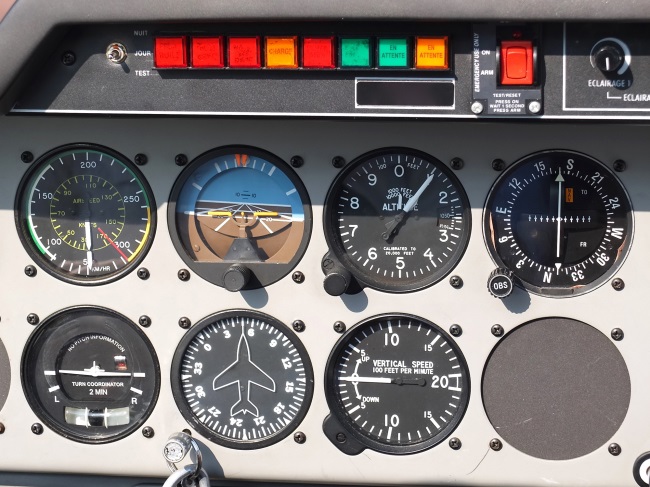
In the vast expanse of the skies, precision is important for safe and efficient flight. Aircraft instruments serve as the eyes and ears of pilots, providing essential information and data to navigate through the airspace with accuracy and confidence. Understanding these instruments is vital for pilots to make informed decisions and ensure the smooth operation of the aircraft. From altimeters to gyroscopes, aircraft instruments play a crucial role in maintaining flight safety and precision. Let’s explore aircraft instruments to unravel their significance and the insights they offer into the dynamic world of aviation.
Altimeter
One of the most fundamental aircraft instruments is the altimeter, which measures the altitude of the aircraft above sea level. This essential device allows pilots to maintain the desired altitude, adhere to airspace regulations, and avoid collisions with terrain or other aircraft. By providing accurate altitude readings, altimeters enable pilots to navigate through varying terrain and changing atmospheric conditions with confidence, ensuring safe and precise flight operations.
Airspeed Indicator
The airspeed indicator is another crucial instrument that measures the speed of the aircraft relative to the surrounding air. This information is vital for pilots to maintain optimal airspeeds during different phases of flight, including takeoff, cruising, and landing. By monitoring airspeed, pilots can ensure efficient fuel consumption, control aircraft performance, and adhere to recommended operating speeds for safety and stability in various flight conditions.
Attitude Indicator
The attitude indicator, also known as the artificial horizon, provides pilots with a visual representation of the aircraft’s orientation relative to the earth’s horizon. This instrument displays the aircraft’s pitch and roll attitudes, enabling pilots to maintain level flight, execute turns, and recover from unusual flight attitudes. By offering a reliable reference for aircraft orientation, attitude indicators play a crucial role in flight maneuvering and spatial awareness, particularly in low visibility or instrument flight conditions.
Turn Coordinator
The turn coordinator is a specialized instrument that provides pilots with information about the aircraft’s rate of turn and coordination during maneuvers. By detecting changes in aircraft heading and bank angles, the turn coordinator helps pilots maintain coordinated turns and prevent adverse yaw effects. This instrument aids in maintaining control and stability during turns, ensuring smooth and precise flight operations.
Vertical Speed Indicator
The vertical speed indicator (VSI) measures the rate of climb or descent of the aircraft. This instrument provides pilots with real-time feedback on the aircraft’s vertical motion, allowing them to adjust throttle settings and control ascent or descent rates accordingly. By monitoring vertical speed, pilots can maintain altitude stability, execute climbs and descents with precision, and adhere to assigned altitudes or flight profiles.
Conclusion
Aircraft instruments are indispensable tools that provide pilots with essential information and data to navigate the skies with precision and confidence. From altimeters and airspeed indicators to attitude indicators and turn coordinators, each instrument plays a crucial role in maintaining flight safety and operational efficiency. By understanding the functions and insights offered by aircraft instruments, pilots can make informed decisions, execute maneuvers with precision, and ensure the smooth operation of the aircraft in all phases of flight. With precision in the skies, aircraft instruments empower pilots to conquer the challenges of aviation and navigate through the boundless expanse of the sky with skill and expertise.






